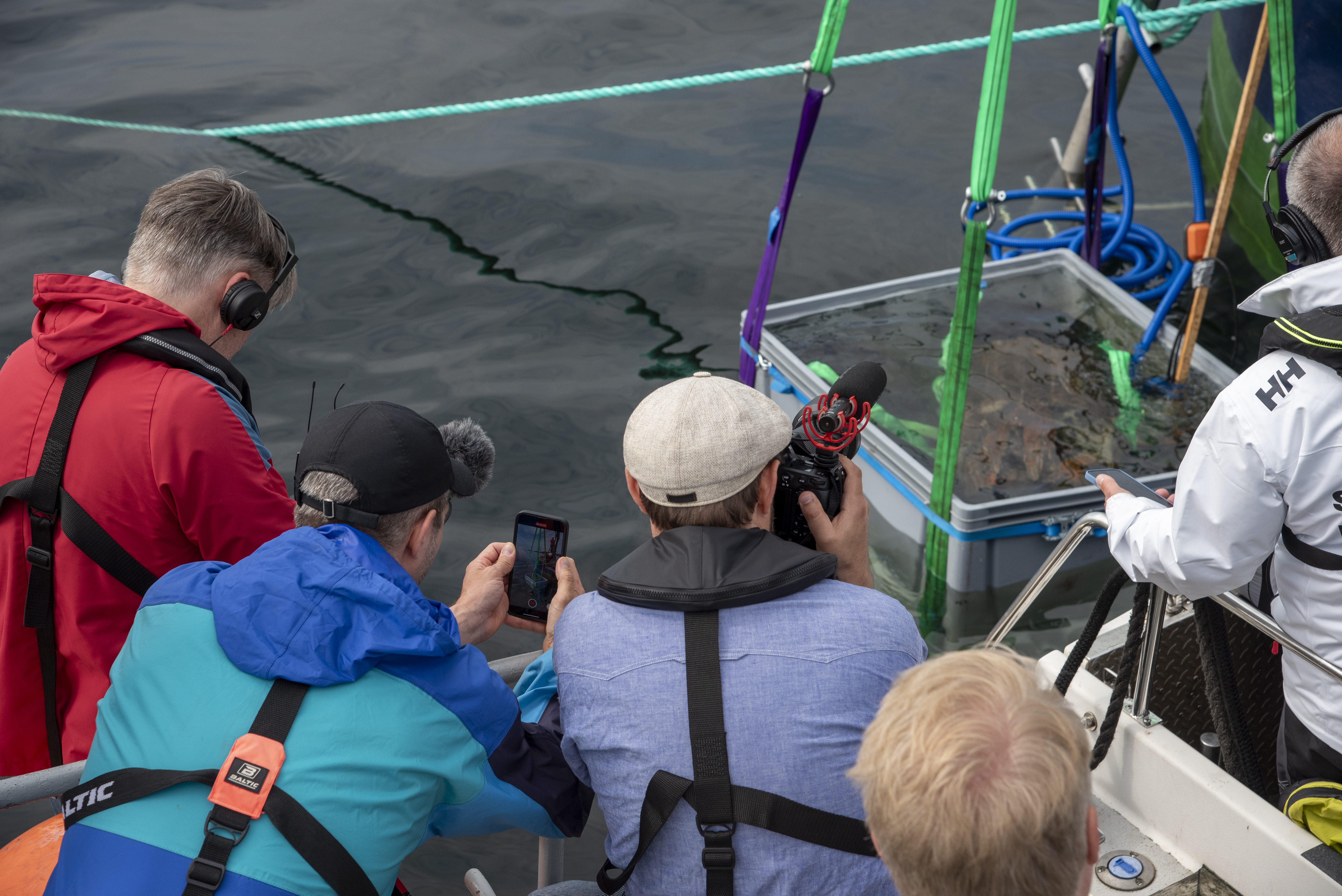
The so-called Osmund wreck, named after its unique cargo, sank during the time of Gustav Vasa and was rediscovered in 2017. In a unique research project, maritime archaeologists from Vrak, in collaboration with Jernkontoret, have salvaged the barrels from the sunken ship. The work was made possible by research grants from the Voice of the Ocean Foundation.
Over the course of two weeks, maritime archaeologists from the museum have been working at the wreck site. They have excavated the cargo and taken great care to transfer one of the 20 or so barrels found on board to a lifting device.
On Friday 24 May, the barrel of osmund iron was lifted out of the water for the first time in almost 500 years, in front of a crowd of media. The partially broken barrel, with its cargo visible, will now be examined further by a conservator. The project hopes to determine what the osmunds were used for and where they were headed when the ship sank.
“It’s great to finally have the barrel up,” says Jim Hansson, project manager at the Museum of Wrecks. “It was incredibly difficult to get it out and get it off – the barrel is so heavy and the water so deep.”
Excavations of the wreck also revealed that several other objects were stowed in the cargo. Vast quantities of fish bones suggest that dried fish were on board. Additionally, archaeologists discovered several horns of large deer, intended for export as material for making combs and other goods.
The Osmund wreck was discovered in 2017, followed by a major international research project initiated by Vrak together with Jernkontoret. With its cargo of barrels of osmund iron, the ship has attracted much attention.
Written sources tell us that osmund iron was a key export from Sweden in the period from the Middle Ages to the 17th century. Despite this, researchers have known little about what an osmund was, how it was produced, and how it differed from other iron.
One of the aims of the new project is to find out more about the history of the cargo. Do all osmunds come from the same place? Is it true that they were all of a uniform size, as historical sources indicate? Through the salvage, the researchers hope to get many more clues to early Swedish iron processing.